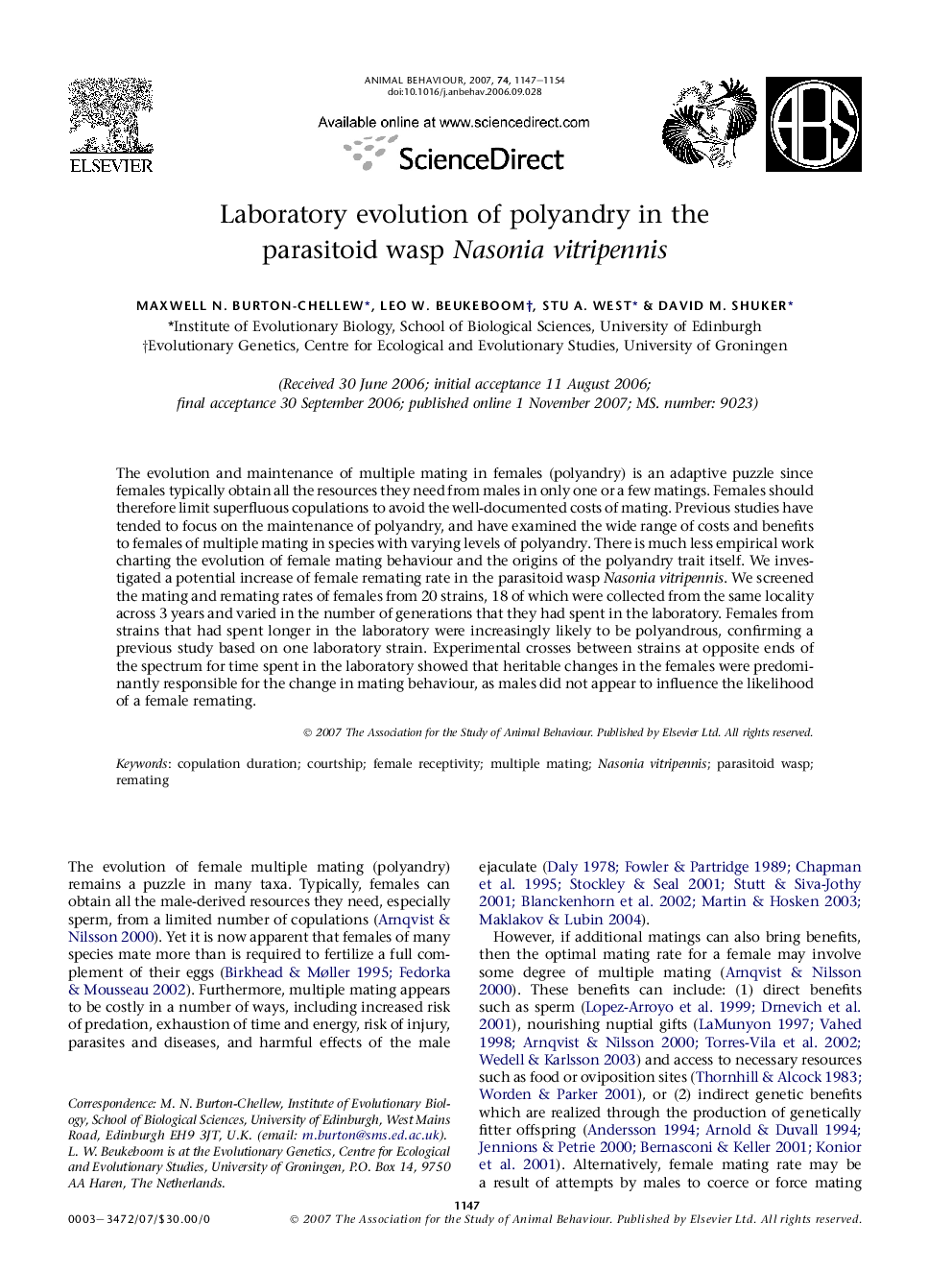| Article ID | Journal | Published Year | Pages | File Type |
|---|---|---|---|---|
| 2418268 | Animal Behaviour | 2007 | 8 Pages |
The evolution and maintenance of multiple mating in females (polyandry) is an adaptive puzzle since females typically obtain all the resources they need from males in only one or a few matings. Females should therefore limit superfluous copulations to avoid the well-documented costs of mating. Previous studies have tended to focus on the maintenance of polyandry, and have examined the wide range of costs and benefits to females of multiple mating in species with varying levels of polyandry. There is much less empirical work charting the evolution of female mating behaviour and the origins of the polyandry trait itself. We investigated a potential increase of female remating rate in the parasitoid wasp Nasonia vitripennis. We screened the mating and remating rates of females from 20 strains, 18 of which were collected from the same locality across 3 years and varied in the number of generations that they had spent in the laboratory. Females from strains that had spent longer in the laboratory were increasingly likely to be polyandrous, confirming a previous study based on one laboratory strain. Experimental crosses between strains at opposite ends of the spectrum for time spent in the laboratory showed that heritable changes in the females were predominantly responsible for the change in mating behaviour, as males did not appear to influence the likelihood of a female remating.
